 Facebook
Facebook
 X
X
 Instagram
Instagram
 TikTok
TikTok
 Youtube
Youtube

Irwin Jacobs, master of the big-money art of acquiring political influence, is looking to have his best-ever year in 2016.
The billionaire La Jolla Democrat, cofounder of Qualcomm, was one of the first to fund the presidential bid of Hillary Clinton, kicking in $50,000 to the Ready for Hillary political action committee in June 2013.
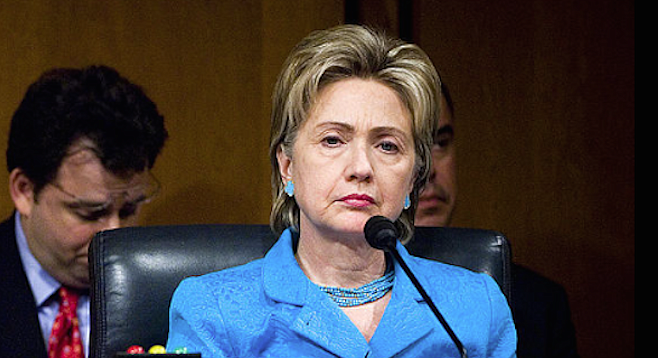
Then, last August, Jacobs and wife Joan threw a fundraiser for Clinton at their La Jolla estate with former Democratic congresswoman and Jerry Brown aide Lynne Schenk. “We didn’t want San Diego at the tail end," Schenk told Union-Tribune columnist Diane Bell.
Jacobs's primary national agenda is Qualcomm's push for more so-called H-1B visas for foreign engineers, as well as thwarting opposition to international trade treaties, which have proven immensely lucrative for the cell-phone technology giant.
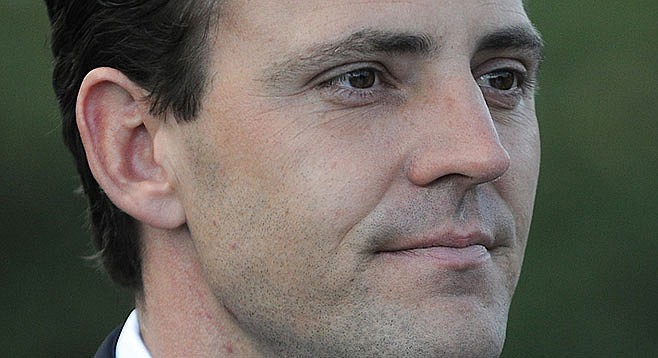
In April 2013, the company was the power behind a lobbying group calling itself San Diegans United for Commonsense Immigration Reform, led by Nathan Fletcher, the onetime Republican assemblyman who turned independent during his first failed bid for mayor of San Diego in 2012.
Following that race, Fletcher was hired by Qualcomm and subsequently declared himself a Democrat, running against Faulconer and Democratic city councilman David Alvarez in 2013's special election to replace fallen mayor Bob Filner.
Despite heavy financial backing from Jacobs and his well-heeled Qualcomm contingent, Fletcher lost again and Republican Faulconer went on to beat Alvarez in a February 2014 run-off.
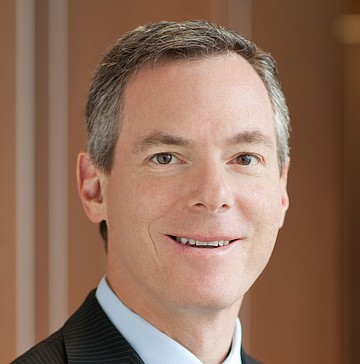
This year, Paul Jacobs and a raft of other Qualcomm executives threw their financial support to Faulconer’s June reelection bid, coming up with a total of $35,400 for the mayor's 2016 reelection committee, according to disclosure data on file with the city clerk's office.
One major payoff came this week when the safely reelected Faulconer appeared Thursday morning (June 30) alongside Irwin Jacobs in Balboa Park's Plaza de Panama to announce the mayor's revival of Jacobs's controversial road and parking-garage makeover.
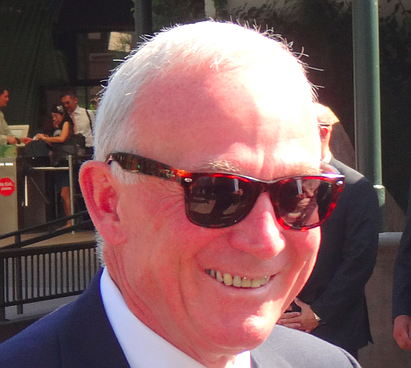
Initiated under Republican mayor Jerry Sanders, another recipient of Jacobs and Qualcomm political money, the plan was widely opposed by park preservationists and others who claimed the plan, to be paid for by Jacobs, was an egotistical grab for power and recognition.
Email subsequently obtained under the California Public Records Act revealed the senior Jacobs to be obsessed by certain details of the project, including reducing staffing of the massive parking garage to be built behind the Organ Pavilion.
"Have you looked at further automation in the garage to decrease parking garage staff?" Jacobs asked in a February 5, 2011, email to a Sanders staffer. "Should be almost human-free except for emergencies."
As for the project's critics, the billionaire demanded of the mayor's staff, "We should comb through all of the various negative comments and letters and look for others that need a response."
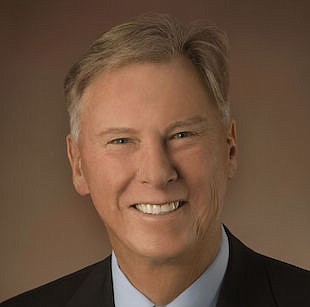
One of the staunchest foes of the Jacobs scheme was then–California state historic preservation officer Milford Wayne Donaldson, who wrote in a February 3, 2012, memo to the National Park Service:
"At great risk is the Cabrillo Bridge, its setting, the spatial relationships and special elements which define the National Historic Landmark District of Balboa Park."
Donaldson, who began his architectural career in San Diego, called out a series of unfavorable impacts on the park resulting from the makeover, including "Demolition of 82 feet of the Cabrillo Bridge."
Another problem, according to Donaldson, was "the introduction of a new two-lane roadway that bisects the historic core into two spaces, something that has never existed and was never designed to be. This is achieved by excavating a very large ravine containing the road, bisecting the historic central mesa, which includes the addition of retaining walls and fills significant parts of Palm Canyon, altering the historic space and land forms irreversibly."
Equally as bad, he said, "The road continues into a three story partially underground parking lot that abuts directly against the historic Spreckels Organ Pavilion. This parking lot will then have numerous new buildings on top along with grass areas.”
Noted Donaldson, “It irreversibly changes the relationship of the organ pavilion to the landscape and severely diminishes its prominent setting."
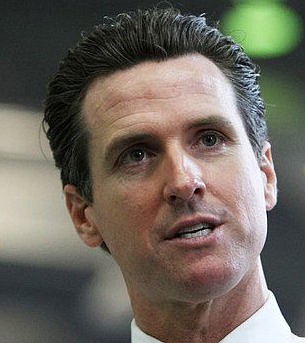
Jacobs threw hundreds of thousands of dollars of lobbying money against his opponents and enlisted the backing of Democrat Lt. governor Gavin Newsom, who sent a February 2012 letter to Donaldson warning the chief preservation officer to get out of the way.
Wrote Newsom to Donaldson, "this is a project with broad local political, philanthropic and community support so it may be more productive to work in collaboration with the project development team to achieve your goal of preserving this historical open-space."
He continued, "As the State Historic Preservation Officer I hope that you will consider these arguments, withdraw your comments, and begin to work in collaboration with the leaders of the Plaza de Panama project. Should you need help making contact with the project team I stand ready to assist."
A link to Newsom's letter was subsequently tweeted by Rachel Laing, a longtime city-hall influence peddler who was then a Sanders spokeswoman.
A month after his attack on Donaldson, Newsom received $12,000 for his 2014 reelection campaign fund from Irwin Jacobs and his wife. Donaldson subsequently lost his job.
The Plaza de Panama project was ultimately brought down in February 2013 by an environmental lawsuit by Save Our Heritage Organisation, and Jacobs proclaimed his surrender to KPBS, the San Diego State–operated public radio operation he bankrolls.
But the ruling by San Diego Superior Court judge Timothy Taylor was subsequently overturned on appeal, opening the way to this week's comeback by Jacobs.
"Mayor Faulconer, who supported the project as a Councilmember, has brought elected, business, community and Balboa Park leaders together to revive the dormant project and finally transform the Plaza de Panama into one of the city’s great public spaces for generations of San Diegans to enjoy," said a news release timed to Faulconer's appearance with Jacobs.
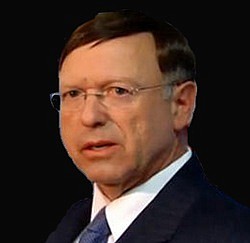
Chimed in lame-duck GOP city attorney Jan Goldsmith — widely expected to join the city’s corps of lobbyists and corporate attorneys after his departure from office, and himself the recipient of sizable campaign cash from Paul Jacobs and Qualcomm associates — “The judicial system erroneously delayed these park improvements, but ultimately justice was done. Now the project can move forward and we can reclaim these plazas and promenades for future generations to enjoy.”
Added the mayor's press release, "The original 2012 cost estimate of $45 million for the project will need to be revised to reflect updated state development regulations, the applicability of prevailing wage and a less competitive bidding market."
How much cash Jacobs is prepared to put up this round remains a tightly guarded secret. "The project would be financed through a combination of paid parking revenues, City funds earmarked for major capital projects and private philanthropy, led by the Plaza de Panama Committee," according to the release.
"More details will be presented in July when Mayor Faulconer asks the City Council to vote on the final actions to move forward with the project."


Irwin Jacobs, master of the big-money art of acquiring political influence, is looking to have his best-ever year in 2016.
The billionaire La Jolla Democrat, cofounder of Qualcomm, was one of the first to fund the presidential bid of Hillary Clinton, kicking in $50,000 to the Ready for Hillary political action committee in June 2013.

Then, last August, Jacobs and wife Joan threw a fundraiser for Clinton at their La Jolla estate with former Democratic congresswoman and Jerry Brown aide Lynne Schenk. “We didn’t want San Diego at the tail end," Schenk told Union-Tribune columnist Diane Bell.
Jacobs's primary national agenda is Qualcomm's push for more so-called H-1B visas for foreign engineers, as well as thwarting opposition to international trade treaties, which have proven immensely lucrative for the cell-phone technology giant.

In April 2013, the company was the power behind a lobbying group calling itself San Diegans United for Commonsense Immigration Reform, led by Nathan Fletcher, the onetime Republican assemblyman who turned independent during his first failed bid for mayor of San Diego in 2012.
Following that race, Fletcher was hired by Qualcomm and subsequently declared himself a Democrat, running against Faulconer and Democratic city councilman David Alvarez in 2013's special election to replace fallen mayor Bob Filner.
Despite heavy financial backing from Jacobs and his well-heeled Qualcomm contingent, Fletcher lost again and Republican Faulconer went on to beat Alvarez in a February 2014 run-off.

This year, Paul Jacobs and a raft of other Qualcomm executives threw their financial support to Faulconer’s June reelection bid, coming up with a total of $35,400 for the mayor's 2016 reelection committee, according to disclosure data on file with the city clerk's office.
One major payoff came this week when the safely reelected Faulconer appeared Thursday morning (June 30) alongside Irwin Jacobs in Balboa Park's Plaza de Panama to announce the mayor's revival of Jacobs's controversial road and parking-garage makeover.

Initiated under Republican mayor Jerry Sanders, another recipient of Jacobs and Qualcomm political money, the plan was widely opposed by park preservationists and others who claimed the plan, to be paid for by Jacobs, was an egotistical grab for power and recognition.
Email subsequently obtained under the California Public Records Act revealed the senior Jacobs to be obsessed by certain details of the project, including reducing staffing of the massive parking garage to be built behind the Organ Pavilion.
"Have you looked at further automation in the garage to decrease parking garage staff?" Jacobs asked in a February 5, 2011, email to a Sanders staffer. "Should be almost human-free except for emergencies."
As for the project's critics, the billionaire demanded of the mayor's staff, "We should comb through all of the various negative comments and letters and look for others that need a response."

One of the staunchest foes of the Jacobs scheme was then–California state historic preservation officer Milford Wayne Donaldson, who wrote in a February 3, 2012, memo to the National Park Service:
"At great risk is the Cabrillo Bridge, its setting, the spatial relationships and special elements which define the National Historic Landmark District of Balboa Park."
Donaldson, who began his architectural career in San Diego, called out a series of unfavorable impacts on the park resulting from the makeover, including "Demolition of 82 feet of the Cabrillo Bridge."
Another problem, according to Donaldson, was "the introduction of a new two-lane roadway that bisects the historic core into two spaces, something that has never existed and was never designed to be. This is achieved by excavating a very large ravine containing the road, bisecting the historic central mesa, which includes the addition of retaining walls and fills significant parts of Palm Canyon, altering the historic space and land forms irreversibly."
Equally as bad, he said, "The road continues into a three story partially underground parking lot that abuts directly against the historic Spreckels Organ Pavilion. This parking lot will then have numerous new buildings on top along with grass areas.”
Noted Donaldson, “It irreversibly changes the relationship of the organ pavilion to the landscape and severely diminishes its prominent setting."

Jacobs threw hundreds of thousands of dollars of lobbying money against his opponents and enlisted the backing of Democrat Lt. governor Gavin Newsom, who sent a February 2012 letter to Donaldson warning the chief preservation officer to get out of the way.
Wrote Newsom to Donaldson, "this is a project with broad local political, philanthropic and community support so it may be more productive to work in collaboration with the project development team to achieve your goal of preserving this historical open-space."
He continued, "As the State Historic Preservation Officer I hope that you will consider these arguments, withdraw your comments, and begin to work in collaboration with the leaders of the Plaza de Panama project. Should you need help making contact with the project team I stand ready to assist."
A link to Newsom's letter was subsequently tweeted by Rachel Laing, a longtime city-hall influence peddler who was then a Sanders spokeswoman.
A month after his attack on Donaldson, Newsom received $12,000 for his 2014 reelection campaign fund from Irwin Jacobs and his wife. Donaldson subsequently lost his job.
The Plaza de Panama project was ultimately brought down in February 2013 by an environmental lawsuit by Save Our Heritage Organisation, and Jacobs proclaimed his surrender to KPBS, the San Diego State–operated public radio operation he bankrolls.
But the ruling by San Diego Superior Court judge Timothy Taylor was subsequently overturned on appeal, opening the way to this week's comeback by Jacobs.
"Mayor Faulconer, who supported the project as a Councilmember, has brought elected, business, community and Balboa Park leaders together to revive the dormant project and finally transform the Plaza de Panama into one of the city’s great public spaces for generations of San Diegans to enjoy," said a news release timed to Faulconer's appearance with Jacobs.

Chimed in lame-duck GOP city attorney Jan Goldsmith — widely expected to join the city’s corps of lobbyists and corporate attorneys after his departure from office, and himself the recipient of sizable campaign cash from Paul Jacobs and Qualcomm associates — “The judicial system erroneously delayed these park improvements, but ultimately justice was done. Now the project can move forward and we can reclaim these plazas and promenades for future generations to enjoy.”
Added the mayor's press release, "The original 2012 cost estimate of $45 million for the project will need to be revised to reflect updated state development regulations, the applicability of prevailing wage and a less competitive bidding market."
How much cash Jacobs is prepared to put up this round remains a tightly guarded secret. "The project would be financed through a combination of paid parking revenues, City funds earmarked for major capital projects and private philanthropy, led by the Plaza de Panama Committee," according to the release.
"More details will be presented in July when Mayor Faulconer asks the City Council to vote on the final actions to move forward with the project."
Comments